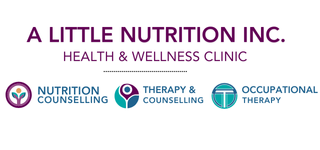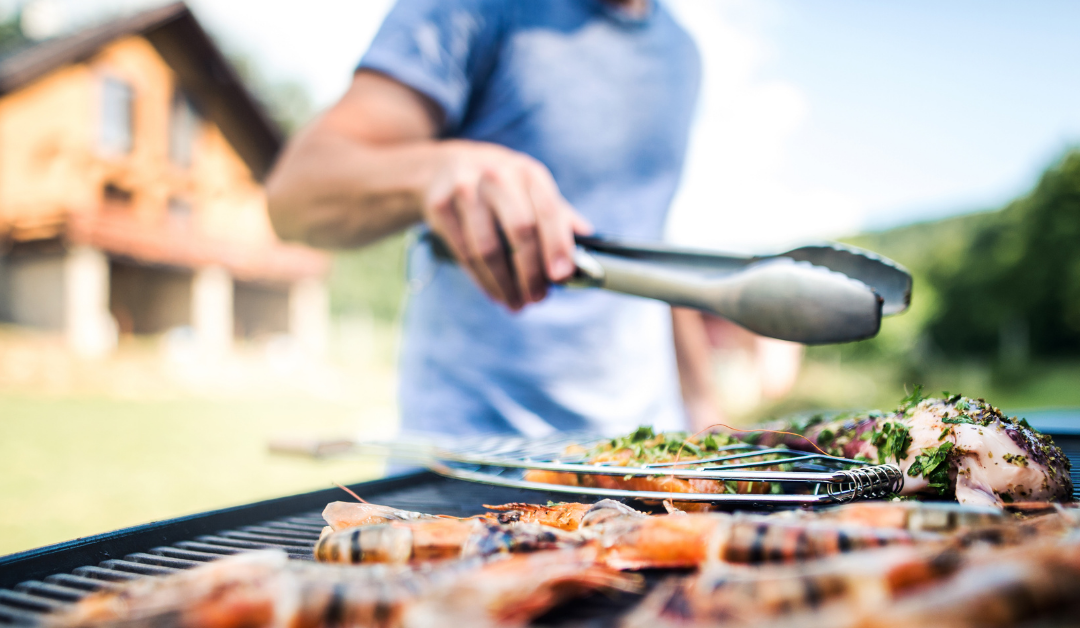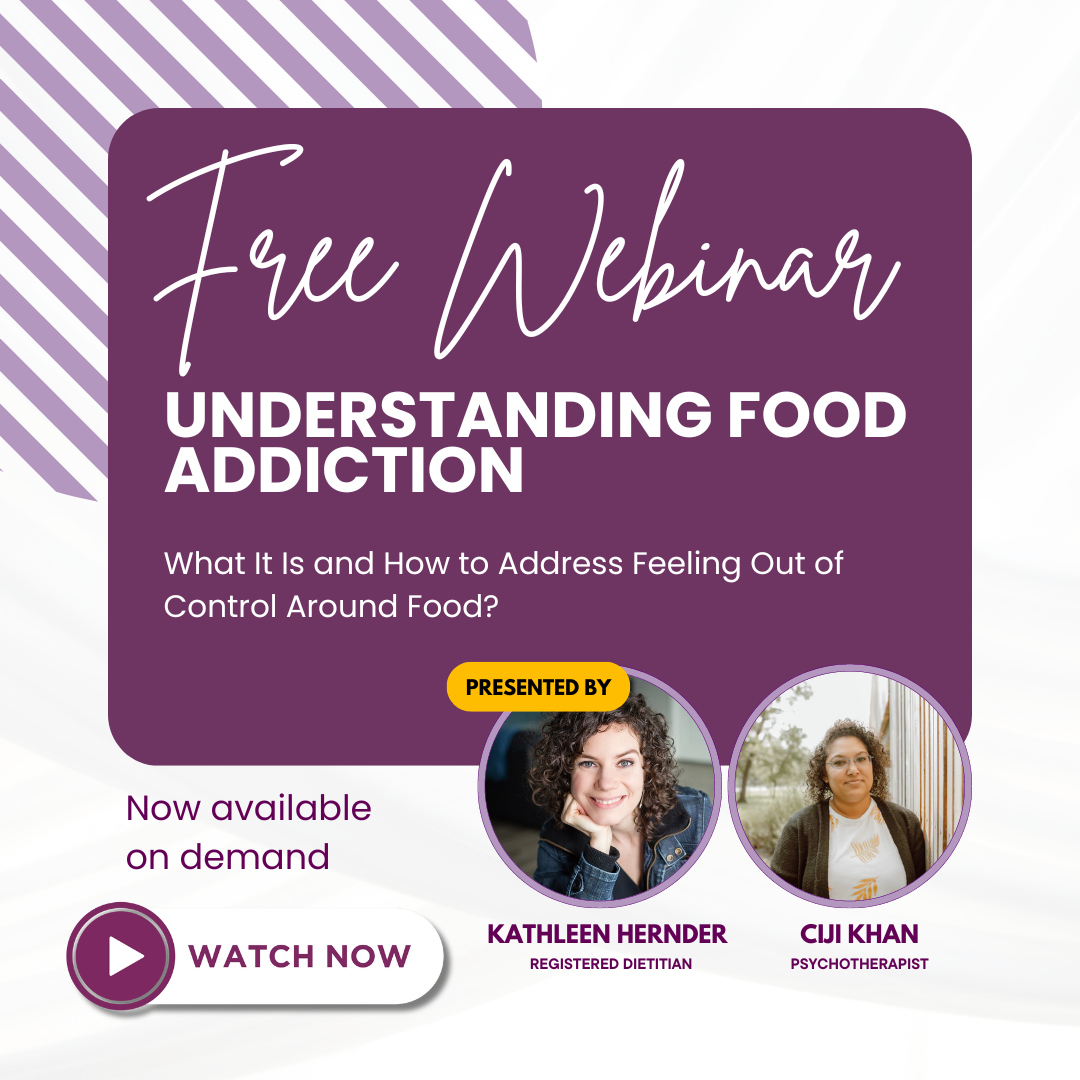It’s BBQ Season! The weather is warming up and the air will soon be filled with the smell of delicious food cooking on the BBQ! With warmer weather also comes more outside gatherings and meals with family and friends (please check your provincial public health guidelines for grouping limits and public health measures during this time).
Food safety is important, especially when gathering in groups. Foodborne illness (also known as food poisoning) can occur when an individual consumes contaminated food. Symptoms of foodborne illness vary and it can take hours to weeks before a person feels unwell. It is important to ensure safe food practices to help prevent foodborne illness.
Here are some tips to help you remain mindful of food safety during BBQ season
Tip #1: Check your Meat
Using a thermometer to check your meat products is important to ensure that the meat has been cooked to the proper internal temperature. Different meat products have different internal temperatures that make them safe for consumption. When checking burgers, ensure you are inserting the thermometer into the side of the burger. When checking other meats, insert the thermometer into the thickest part of the meat.
Each individual piece of meat should be checked as different size meats will require different cooking times to reach a safe temperature. Be sure to clean your thermometer after checking each piece so you do not contaminate a cooked piece of meat with juices or residue from an uncooked piece of meat. Health Canada has an information chart for safe internal temperatures of food which can be accessed here: Poster: Safety is in the numbers – Canada.ca
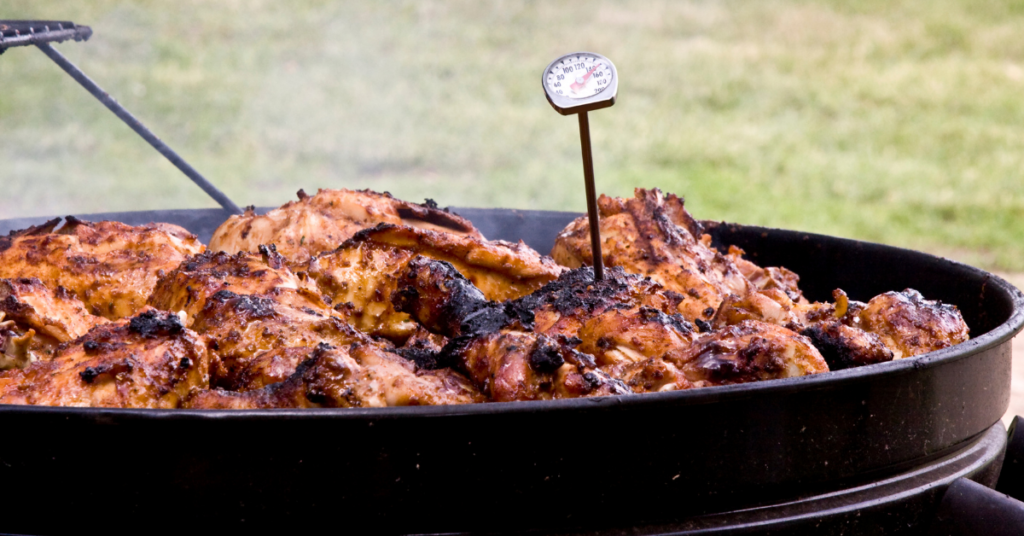
Tip #2: Keep it Separate and Keep it Clean
It is important to keep raw foods separate from cooked foods when using a barbeque or any other cooking method. Use different utensils and plates/dishes for raw and cooked foods. Items that have been used for raw foods should not be used for cooked foods. This will help to prevent cross contamination. Washing your hands after handling raw foods and before eating is an important and necessary practice.
Produce should also be washed before preparation and/or cooking and should be kept separate from any meat products. Make sure areas used for the preparation of raw foods are cleaned and sanitized after each use. Food preparation areas and cooking surfaces such as the BBQ grill must be cleaned regularly. If eating outside, wash and sanitize your table or service area before eating.
Tip #3: Store Food Properly and Serve Food Promptly
Food should not remain in the temperature danger zone (between 4⁰C to 60⁰C) as this is the temperature that allows bacteria to grow on foods. When having a meal outside, keep cold foods refrigerated and wait until the last minute to bring cold foods outside for service. When food is finished cooking, serve it promptly so it is still hot. Do not let food sit on the counter or out in the sun. When food is left in the temperature danger zone, the chance of foodborne illness increases.
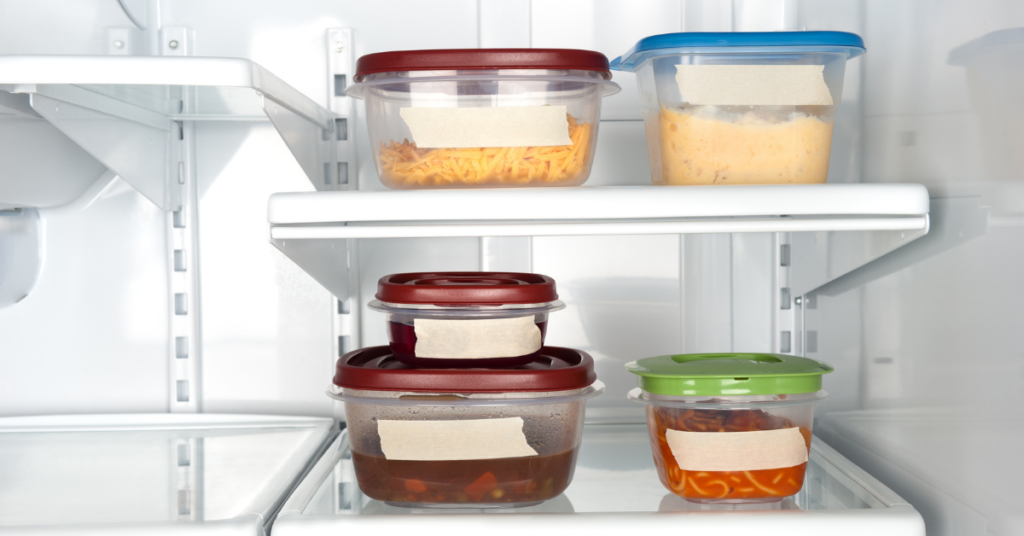
Tip #4: Place a Date on your Leftovers
Leftovers should be stored in the refrigerator as soon as possible. They should also be labeled with the date to ensure they are consumed within a safe time frame. Glass storage containers are great for leftovers because you can use a dry erase marker to write the date on the glass.
This helps to prevent the “look and smell test” to try and determine how long the leftovers have been in the refrigerator. The problem with doing this is that food can be spoiled and unsafe to eat before it starts to look or smell bad. Leftovers should not be stored in the refrigerator for longer than 3-4 days. Writing the date on your food containers is a great way to ensure that it is consumed within a safe amount of time. If you are unsure if the food is safe to eat, discard it. When in doubt – throw it out!
Tip #5: Designate a Food Server
If you are having a gathering with family or friends, try to designate one person as a food server. This means less people will be touching the food and serving utensils, and can help reduce the risk of contamination. Make sure that everyone washes their hands before plating their food and eating their meal. When someone comes back for seconds, ensure they have a clean plate. Touching a serving utensil to a used plate can contaminate the utensil and the rest of the food when it is placed back in the bowl/plate.
Tip #6: Check Provincial Public Health Guidelines
Please follow your provincial guidelines for gathering limits and social distancing protocols to help keep everyone safe. Remember that symptoms of foodborne illness can vary and some symptoms may be similar to symptoms of Covid-19 (for example: vomiting, diarrhea, fever, fatigue). Please follow public health guidelines when you have any symptoms of illness and if you continue to feel unwell, follow up with your healthcare provider.
For more food safety information go to: Food safety and you – Canada.ca
*This article was written by Shelly Simms, RD
Check out our ULTIMATE GRILLABLE PLANT-BASED VEGGIE BURGER Recipe for a Plant-based alternative
NEED HELP WITH YOUR NUTRITION? OUR TEAM CAN HELP!
HOW DO I BOOK AN APPOINTMENT WITH A REGISTERED DIETITIAN?
- To book an appointment with one of our Registered Dietitians or therapists you can:
- Phone: 204-515-7466
- Email: admin@alittlenutrition.com
- Book online: https://alittlenutrition.janeapp.com
